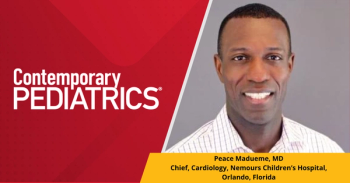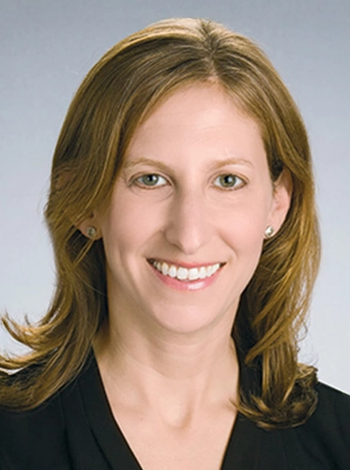
Top tech for pediatricians
From medical waste machines to neurostimulator devices, here are the tools to take your practice to the next level.
I continue to be amazed by the ability of bioengineers to develop technologies that expedite diagnosis or provide innovative treatment options for patients. Here are some that I consider excellent for pediatric use.
Consider an “intelligent” stethoscope
I have been a long-time user of digital stethoscopes. HD Medical is now producing the HD Steth, which the company describes as a US Food and Drug Administration (FDA)–approved “intelligent stethoscope with integrated electrocardiogram (ECG).”1 It is an attractively designed device that displays the patient’s heart rate during auscultation and provides ambient noise reduction as well as amplification. The $500 device communicates to an android-based app displaying a phonocardiograph and an EK.
In addition, the company is developing the HealthyU remote patient monitoring system.2 The unique device, which is not yet approved by the FDA, will record a patient’s respiratory rate, temperature, pulse oximeter reading, heart rate, blood pressure trend, and 7-lead-EKG. It will also function as a stethoscope. Pretty impressive for a device that fits in the palm of your hand.
Be socially responsible with medical sharps
Every medical practice must dispose of medical sharps. Pediatricians have 2 options: Use one of a limited number of medical sharp disposal services or process medical sharps on site. When I was in private practice, over a decade ago, I processed our sharps by using the Medical Waste Machine from Medical Innovations.3 The system uses locked Teflon-lined metal containers placed in examination rooms and anywhere sharps are used. When these containers are filled, they are opened, 2 plastic discs inserted, and the container locked and placed in the Medical Waste Machine. The device is locked and turned on, heating the container to 380 °F, melting the plastic discs, sterilizing the sharps, and encapsulating the waste in a plastic block during a 4-hour period. This is placed in regular trash. In our three-provider practice, we performed this process once per week. The machine and containers are a one-time purchase, and our practice purchased plastic discs 2 or 3 times per year. The device was always reliable and did not require any repairs or replacement for the 10 years that we used the device.
I was recently informed by David Freedman, CEO of Medical Innovations, that they have upgraded the electronics and other components of the Medical Waste Machine, making it more energy efficient. Although the exterior features of the Medical Waste Machine have received some quality-of-life improvements, such as an improved handle design for easy transportation and mid-cycle security, the real improvements can be seen in an overhaul of the machine’s internal mechanics. A top-to-bottom redesign of the heating element and control systems allow the machine to self-regulate temperature like never before. This ensures the ideal temperature for total sterilization is reached and maintained throughout the process, leading to a more reliable and cost-effective solution.
The improved device continues to be simple to operate, just “set it and forget it” as detailed above. If you wish to dispose of your sharps inexpensively and in an environmentally responsible way, consider the Medical Waste Machine.
Communicate more effectively
The old-fashioned way to communicate with patients is via letter or phone call. Too often patients who wish to schedule an appointment or ask a physician a question often need to endure long times on hold. As a result, parents get frustrated and often consider seeking care outside of their medical home or switching practices. In addition, physicians who return calls to patients encounter full mailboxes or waste precious time leaving messages for patients to return your call. What follows too often is an endless game of phone tag.
The best method of communicating with patients, given today’s technology, is via a HIPAA-compliant messaging system such as Gnymble.4 Health care workers can message a patient or broadcast a message to many patients via a smartphone application or a web-based portal, and also copy and paste messages into the office notes. You can even customize your responses with the names of the parents, and patients, and include images or files to enhance communications. The system is affordable and should be considered by any primary care or specialty practice who wishes to improve communication with patients. OhMD is another HIPAA-compliant messaging application worth considering.5 Unlike Gnymble, OhMD provides a free version that lets you communicate via text with colleagues and even attach files to text communications. Paid plans include added features such as broadcasting messages to individual patients or groups, auto messaging, live website chat, video visits, attachment of forms, and integration with popular electronic health records (EHRs). If you are tired of wasting time playing phone tag with patients, consider using these secure messaging alternatives.
Code notes with ease
Effective January 1, 2021, the Centers for Medicare & Medicaid Services, implemented a new evaluation and management coding system for outpatient visits. It was the first change in 25 years, developed to ease the documentation burden on medical providers. I’ve always depended on emuniversity.com to learn about the nuances of medical coding.6 Peter Jensen, CEO, is a physician and certified coder and does an excellent job of explaining
the new system concisely. The online course is about $300 and you earn CME credits for participation. In addition, MDMtool.org is a website that lets you check boxes to quickly determine the level of service according to the 2021 guidelines and copy and paste a medical decision-making note into your office note.7
Facilitate integration with vaccine registries
There are now 63 state, regional, and city-based vaccine registries, called immunization information systems (IIS), each operating independently under its respective local and state policies. It is the responsibility of the pediatric office staff to enter the required data. It can be a burden to staff when they need to enter the data in multiple locations such as the registry, the EHR, and the patient vaccination card.
One method of speeding data entry is the integration of barcode scanning into EHRs. After receiving a shipment of vaccine, the shipment form is scanned into a vaccine inventory which is integrated into the EHR.
A startup company, Canid, has a novel approach to facilitating IIS entries for pediatricians.8 Canid helps practices acquire vaccines and has developed a software system that either integrates with popular EHRs or facilitates data entry into EHRs by providing a data file that is uploaded into an EHR daily. The Canid system keeps track of a practice’s vaccine inventory, replenishes supplies when appropriate, and most importantly, monitors patient appointments so that a child receives all necessary vaccines. They do this by distributing barcode scanners that integrates with their proprietary software platform. When vaccines are ordered and taken out of a refrigerator or freezer, they are scanned, and fields are populated into a practice’s EHR. Little or no manual entry is needed.
Speed triage calls
When patients or parents call, practices should have a triage system in place to make sure that patients receive the appropriate level of care (office, emergency room, home care), and are seen in a time frame appropriate for their medical condition (urgently, same day, within a few days).
Approximately 30% of calls received by pediatric practices are for nurse triage. It is very important that office nurses use established protocols when triaging calls, and carefully document each encounter. As most practices use EHRs, nurses are needed to document within the patient’s electronic chart. Over 6 years ago, David Schmitt developed ClearTriage, a web-based portal that facilitates the process of triaging patients by medical practices.9 The system integrates the telephone triage protocols developed by Barton Schmitt, MD, to speed triaging office calls as well as documenting recommendations. ClearTriage is inexpensive at just $49 per month per concurrent user and was also one of my “Best Tech” selections in 2015, but it is so efficient at helping health care professionals triage office calls, I felt it was worth mentioning again this year.
Additionally, ClearTriage has introduced a new product called SymptomScreen.10 This is a web portal that helps nonclinical office personnel screen incoming calls to determine if an appointment should be made or the call should be handled by a triage nurse.
Explore innovative devices
I’ve long been a fan of the pulse oximeters produced by Masimo. Masimo uses a proprietary technology called signal extraction technology, which provides rapid signal acquisition and signal stability even when used on “wiggly” patients that pediatricians deal with every day. I have been using the Masimo Rad-G Pulse Oximeter for some time.11 It features a touch screen interface, is durable, and provides readings of pulse oximetry, wave form, perfusion index, as well as a respiration rate from a photoplethysmogram. Best of all, there is a new pediatric sensor that is now available for children 10 kg and above, which makes it easy to obtain reading in young patients.
Most recently, Masimo began marketing the Masimo Bridge, a neurostimulator device recently approved by the FDA to be used by specialists to treat symptoms of opioid withdrawal.12 It is worn around the ear over a 5-day period and can substantially mitigate withdrawal symptoms.13,14
Conclusion
These innovative items will upgrade your practice to the next level. I can’t wait to see the technology we will have available next year.
Disclaimer
Andrew Schuman’s son, Robert Schuman, is the creator of the MDMtool.org. This did not prevent him from delivering an unbiased presentation.
References
1. HD Steth. HD Medical Group. Accessed July 29, 2021.
2. Healthy U. HD Medical. Accessed July 29, 2021.
3. Waste Medical Machine. Medical Innovations. Accessed July 29, 2021.
4. Let them text. Gnymble. Accessed July 29, 2021.
5. Oh MD. Published 2021. Accessed July 29, 2021.
6. EM University. Accessed July 29, 2021.
7. MDMtool by Medgizmos. Accessed July 29, 2021.
8. Canid. Accessed July 29, 2021.
9. Telephone protocols. ClearTriage. Accessed July 29, 2021.
10. SymptomScreen. Accessed July 29, 2021.
11. Masimo Rad-G Pulse Oximeter. Accessed July 29, 2021.
12. Masimo Bridge. Accessed July 29, 2021.
13. Miranda A, Taca A. Neuromodulation with percutaneous electrical nerve field stimulation is associated with reduction in signs and symptoms of opioid withdrawal: a multisite, retrospective assessment Am J Drug Alcohol Abuse. 2018;44(1):56-63. doi:10.1 080/00952990.2017.1295459
14. Roberts A, Sithole A, Sedghi M, Walker CA, Quinn TM. Minimal adverse effects profile following implantation of periauricular percutaneous electrical nerve field stimulators: a retrospective cohort study. Med Devices (Auckl). 2016;9:389-393. doi:10.2147/ MDER.S107426
Newsletter
Access practical, evidence-based guidance to support better care for our youngest patients. Join our email list for the latest clinical updates.








